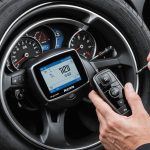Ultimate Guide to Selecting the Ideal Oil for Your British Electric Vehicle: Expert Tips and Insights
As the world transitions towards more sustainable and efficient transportation, electric vehicles (EVs) are becoming increasingly popular. However, when it comes to maintaining your electric car, there are some key differences and considerations compared to traditional internal combustion engine vehicles. Here’s a comprehensive guide to help you select the ideal oil for your British electric vehicle, along with expert tips and insights.
Understanding the Role of Oil in Electric Vehicles
Before we dive into the specifics of oil selection, it’s important to understand the role of oil in EVs. Unlike petrol or diesel cars, electric vehicles do not use oil for combustion. However, they still require lubricants for various components.
Have you seen this : Essential guide to maintaining your british performance car”s exhaust system: expert tips for peak performance and longevity
Lubrication Needs in EVs
Electric vehicles need lubrication for parts such as the gearbox, bearings, and other mechanical components. Here are some key areas where oil is used:
- Gearbox and Transmission: While EVs often have simpler transmission systems, they still require lubrication to ensure smooth operation.
- Bearings and Joints: These components need lubrication to reduce friction and wear.
- Cooling Systems: Some EVs use oil-based cooling systems for their batteries and electric motors.
Types of Oil Suitable for Electric Vehicles
When selecting oil for your EV, you need to consider the specific requirements of your vehicle. Here are the main types of oil that might be relevant:
In the same genre : Uncover eco-conscious tire solutions for electric vehicles in the uk: innovative sustainable picks revealed!
Conventional Oil
Conventional oil, made from petroleum-based products, is the most widely used type of oil. However, it may not be the best choice for EVs due to its limited performance in extreme temperatures and conditions[1].
Synthetic Oil
Synthetic oil is made from synthetic materials and offers superior protection and performance. It is more expensive than conventional oil but provides better lubrication and can handle the unique demands of EV components. Synthetic oil is highly recommended for EVs due to its ability to perform well in a variety of temperatures and conditions[1].
Synthetic Blend Oil
Synthetic blend oil is a combination of conventional and synthetic oils. It offers a balance between the protection of synthetic oil and the affordability of conventional oil. This can be a good option if you want better performance than conventional oil but are on a budget[1].
How to Choose the Right Oil for Your EV
Choosing the right oil for your electric vehicle involves several steps:
Check Your Owner’s Manual
The best place to start is by checking your car’s owner’s manual. The manual will specify the recommended type and viscosity of oil for your vehicle. Using the wrong oil can affect your vehicle’s performance and even invalidate its warranty if it is still under warranty[1].
Consider the Viscosity
Viscosity is a critical factor when selecting oil. The viscosity of the oil determines its flowability and lubricating properties at different temperatures. For example, 5W-30 oil is thinner when cold and thicker when hot, making it suitable for a variety of driving conditions. However, always ensure that the viscosity recommended by your car’s manufacturer is used[1].
Look for Industry Standards
Ensure the oil you choose meets industry standards such as those set by the American Petroleum Institute (API) or the European Automobile Manufacturers Association (ACEA). These standards guarantee that the oil meets certain performance criteria, which is crucial for the longevity and efficiency of your vehicle’s components[5].
Practical Tips for Checking and Maintaining Oil in Your EV
Here are some practical tips to help you check and maintain the oil in your electric vehicle:
How to Check Your Oil Level
- Park on a Level Surface: Ensure your car is parked on a level surface.
- Turn Off the Engine: Let the engine cool down completely before checking the oil.
- Locate the Oil Dipstick: Find the oil dipstick, usually marked with an “oil” label.
- Wipe and Reinsert: Wipe the dipstick clean and reinsert it. Wait a few seconds before pulling it out again.
- Check the Level: The dipstick will indicate the oil level. If it’s below the “low” mark, you need to add more oil[1].
When to Check Your Oil
- Regular Intervals: Check your oil every 3,000 miles or 3 months, whichever comes first.
- Before Long Trips: Always check your oil before embarking on long trips to ensure your vehicle remains safe to drive[1].
The Impact of Regenerative Braking on Maintenance
Regenerative braking, a technology used in many EVs, converts kinetic energy into electrical energy, which is then stored in the battery. Here’s how it affects maintenance:
Reduced Wear on Braking Components
Regenerative braking reduces the wear on traditional braking components, such as brake pads and rotors. This means less frequent replacements and lower maintenance costs over time[2][4].
Smooth Driving Experience
Regenerative braking integrates seamlessly with the driving experience, providing a smooth transition between acceleration and deceleration. This not only enhances energy efficiency but also contributes to a more enjoyable drive[2][4].
Table: Comparison of Oil Types for Electric Vehicles
| Oil Type | Composition | Performance | Cost | Recommended Use |
|---|---|---|---|---|
| Conventional Oil | Petroleum-based | Basic lubrication, limited performance in extreme temperatures | Relatively inexpensive | General use, not ideal for EVs |
| Synthetic Oil | Synthetic materials | Superior protection, better lubrication in extreme temperatures | More expensive | High-performance EVs, extreme driving conditions |
| Synthetic Blend Oil | Combination of conventional and synthetic oils | Balanced protection and affordability | Mid-range cost | General use in EVs, offering better performance than conventional oil |
Quotes and Insights from Experts
-
“We want to ensure we have the highest standards in Europe for lubricant manufacture, blending and marketing, and we want a ‘level playing field’ for all participants, so that we protect the interests of the consumer and other end users,” – David Wright, Company Secretary of VLS[5].
-
“Synthetic oil is more expensive than conventional oil, but it offers better lubrication and can help increase engine performance. It is recommended for high-performance engines and vehicles that are driven in extreme conditions,” – RAC Drive[1].
Charging and Maintenance: How They Interconnect
While oil selection is crucial, it’s also important to understand how charging and maintenance interconnect in the context of EVs.
Charging Infrastructure
Ensuring you have access to reliable charging infrastructure is vital for the health and performance of your EV. Regular charging helps maintain the battery’s health and extends its lifespan.
Driving Habits
Adapting your driving habits can optimize the benefits of regenerative braking. For example, accelerating and braking proactively can recover more energy, making every drive more sustainable and cost-effective[4].
Selecting the ideal oil for your British electric vehicle is a critical aspect of maintaining its performance, efficiency, and longevity. Here are some key takeaways:
- Always Check Your Manual: Ensure you use the oil type and viscosity recommended by your car’s manufacturer.
- Consider Synthetic Oil: Synthetic oil offers superior protection and performance, making it a good choice for EVs.
- Regular Maintenance: Check your oil regularly and maintain your vehicle according to the manufacturer’s schedule.
- Understand Regenerative Braking: This technology reduces wear on braking components and enhances energy efficiency.
By following these tips and insights, you can ensure your electric vehicle runs smoothly, efficiently, and safely over time.
Detailed Bullet Point List: Tips for Maintaining Your EV
- Check Oil Levels Regularly: Every 3,000 miles or 3 months, whichever comes first.
- Use the Right Viscosity: Ensure the oil viscosity matches the manufacturer’s recommendations.
- Monitor Battery Health: Regular charging and avoiding deep discharges can extend battery life.
- Adjust Driving Habits: Proactive acceleration and braking can optimize regenerative braking benefits.
- Keep Your Vehicle Clean: Regular washing and maintenance can prevent damage from environmental factors.
- Update Software: Keep your vehicle’s software up-to-date to ensure optimal performance and efficiency.
- Check for Leaks: Regularly inspect your vehicle for any signs of oil or brake fluid leaks.
- Follow Manufacturer Guidelines: Always follow the manufacturer’s guidelines for maintenance and repairs to ensure warranty validity and optimal performance.
By adhering to these tips and staying informed about the latest in EV technology, you can enjoy a safe, efficient, and enjoyable driving experience with your electric vehicle.









